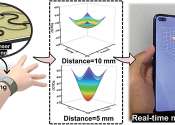Researchers look to the human eye to boost computer vision efficiency
Conventional silicon architecture has taken computer vision a long way, but Purdue University researchers are developing an alternative path—taking a cue from nature—that they say is the foundation of an artificial retina. ...
Nov 29, 2023
0
49









